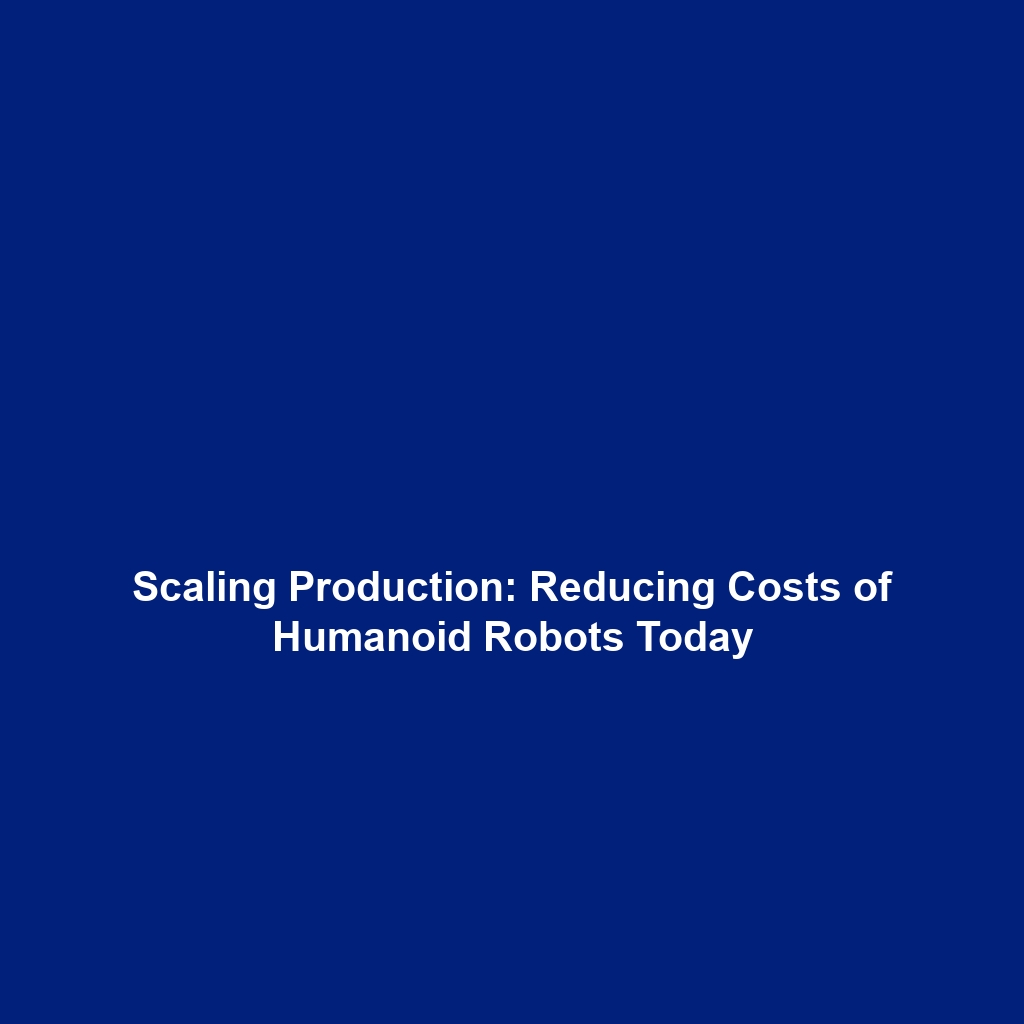Efforts to Scale Up Production and Reduce the Cost of Humanoid Robots
Introduction
The advancements in humanoid robots are witnessing unprecedented momentum, especially in efforts to scale up production and reduce costs. As these robots transition from theoretical concepts to tangible products, significant investments are being made to enhance their accessibility and applicability across various sectors. This article delves into the significance of these efforts and their broader implications on the robotics landscape, focusing on how scaling production and cost reduction can democratize technology globally.
Key Concepts
Understanding Production Scaling
Scaling up production of humanoid robots entails increasing manufacturing capabilities to meet rising demand while ensuring efficiency and quality. Essential concepts include:
- Mass Production: Transitioning from low-volume to high-volume manufacturing processes.
- Automation: Utilizing advanced technologies like AI and robotics to enhance production efficiency.
- Supply Chain Optimization: Streamlining processes to reduce delays and lower costs.
Cost Reduction Techniques
Efforts to diminish the cost of humanoid robots involve several strategies such as:
- Material Innovation: Researching cost-effective materials without compromising quality.
- Modular Design: Developing interchangeable parts that reduce manufacturing complexity and cost.
- Economies of Scale: Increasing production volume to lower the per-unit cost.
Applications and Real-World Uses
The efforts to scale up production and reduce costs are pivotal in various applications of humanoid robots across sectors, including:
- Healthcare: Humanoid robots assist in elderly care, patient monitoring, and rehabilitation.
- Education: Used as teaching aides, humanoid robots can enhance learning experiences in classrooms.
- Manufacturing: Employed for assembly lines and quality control, boosting productivity and safety.
These applications highlight how increasing the availability of affordable humanoid robots can fundamentally alter industries.
Current Challenges
Despite significant progress, various challenges persist in scaling up production and reducing costs:
- Technological Limitations: Current robotics technology often poses constraints in achieving desired functions.
- Public Perception: Skepticism towards humanoid robots affects market acceptance and investment.
- Regulatory Hurdles: Navigating compliance in different markets can complicate widespread adoption.
Future Research and Innovations
Looking ahead, the future of humanoid robots is bright, driven by continuous innovations:
- Artificial Intelligence: Advances in AI are set to enhance the cognitive abilities of humanoid robots.
- 3D Printing: This technology may revolutionize parts manufacturing, significantly lowering costs.
- Sustainable Materials: Research into eco-friendly materials could reduce production costs and environmental impact.
These advancements promise to dramatically reshape the humanoid robotics sector, enhancing functionalities while reducing barriers to entry.
Conclusion
In conclusion, efforts to scale up production and reduce the cost of humanoid robots are crucial in defining the future of this technology. By addressing the current challenges and embracing innovative solutions, we can pave the way for broader applications and acceptance of humanoid robots across various industries. For more insights on robotics innovations, consider exploring our articles on robotics innovation and the future of robotics.

Leave a Reply